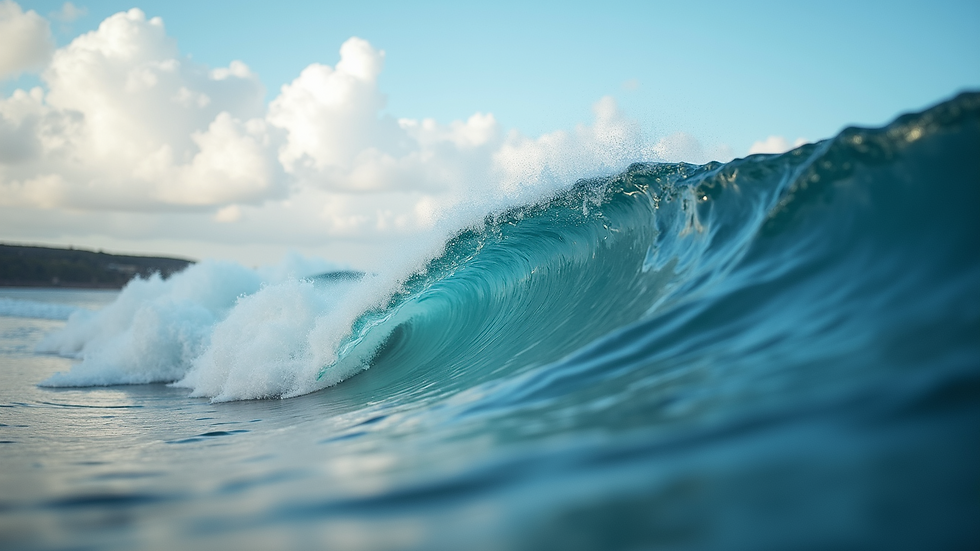Optimal Water Conditions for Successful Spearfishing: Unveiling the Secrets
- Flying Fishman

- Jun 17
- 4 min read
Spearfishing is not just about the thrill of the hunt; it’s an adventure that combines skill, patience, and a deep appreciation for the underwater world. Yet, your success in spearfishing often hinges on the conditions of the water, which can change quickly. Knowing how to identify and respond to these conditions can elevate your experience and increase your chances of a successful catch.
In this article, we will detail the essential water conditions for spearfishing, such as visibility, temperature, and currents, helping you make informed decisions for your next underwater expedition.
Water Clarity and Visibility for Spearfishing
Water clarity is one of the most vital factors in spearfishing. It determines how well you can see fish and other underwater features. Aim for clear waters with a visibility of at least 15 feet for the best results.
Types of Water with Good Clarity
Ocean Waters: Ocean typically offers better visibility compared to lakes and rivers. Ideal conditions occur in spring and early summer when plankton blooms are minimal. According to studies, visibility can often reach 20-30 feet in these conditions.
Tropical Locations: Regions like the Caribbean or the South Pacific have remarkably clear waters due to lower nutrient runoff. For instance, Hawaii is famous for its crystal-clear waters, allowing divers to spot fish from considerable distances.
Freshwater Lakes: While typically less reliable, some well-maintained lakes can offer surprising clarity. Lakes such as Lake Tahoe in California boast depth depths of 1,645 feet and can exhibit remarkable visibility, especially in less populated areas.

Always check local conditions regularly, as they can shift due to rainfall or other environmental changes.
Temperature and Thermocline
Water temperature can influence fish behavior more than you might expect. Most fish species prefer temperatures between 68°F to 85°F (20°C to 29°C), which can significantly impact your catch rate.
Ideal Temperature Conditions
Tropical Water Temperatures: In warm waters, fish are more active and feeding, particularly between 75°F to 85°F (24°C to 29°C). For instance, dive spots around the Florida Keys see an influx of species like snapper and grouper during these temperature ranges.
Thermocline Awareness: The thermocline marks a layer where temperature varies sharply. Fish often gather around these layers for optimal thermal comfort. A dive at the right thermocline can yield catches like barracuda and mahi-mahi as they tend to stay within a few feet above or below this layer.
Seasonal Transitions: During spring and fall, fish migrate to shallower waters for spawning, providing excellent opportunities for spearfishing. For instance, in Southern California, species like halibut can be seen near the surface as temperatures stabilize.

Being aware of temperature changes helps you strategize when to dive, increasing your likelihood of encountering fish.
Currents and Tides
Understanding currents is crucial for a successful spearfishing trip. While strong currents can be challenging, they also encourage fish feeding as they bring in nutrient-rich waters and bait fish.
Positive and Negative Currents
Inshore Currents: Gentle inshore currents often attract bait fish, which in turn lures predatory fish such as striped bass and tuna. Planning your dive time around incoming tides can boost your catch—many experienced divers recommend timing dives an hour and a half before high tide for optimal results.
Strong Tides: Avoid diving in excessively strong currents unless you are experienced. Some seasoned spearfishers position themselves at the edges of currents, where fish are likely to be pushed, offering an opportunity to catch larger species.
Swells and Waves: Moderate swells can effectively obscure a diver’s movements, making it easier to get close to fish. However, be cautious with large swells, as they can compromise visibility and increase hazards.

By understanding the dynamics of tides and currents, you can plan your dive for optimal conditions.
Benefits of Local Knowledge
Gaining insights from local knowledge can significantly improve your spearfishing experience. Each diving location has distinct features. Engaging with local experts provides valuable guidance on the best practices and spots.
How to Gather Local Insights
Dive Shops and Guides: Visit local dive shops to learn about current conditions and successful fishing locations. Often, staff can provide valuable, up-to-date information based on firsthand experience.
Local Spearfishing Groups: Consider joining online forums or social media groups where local divers share their tips and stories about effective spearfishing. Personal experiences can sometimes reveal hotspots that aren't in guidebooks.
Research Your Adventures: Keep a detailed log of your dives, noting water conditions, species caught, and visibility. Tracking this information will help you identify patterns and improve your strategies over time.
By leveraging local insights, you position yourself to maximize your spearfishing efforts.
Final Thoughts
Understanding and adapting to optimal water conditions is critical for enhancing your spearfishing success. Key elements such as water clarity, temperature, currents, and local knowledge play significant roles in your overall experience. By assessing these aspects before your dive, you can improve not only your fish catch but also your enjoyment of the vibrant underwater environment.
Approach each dive as a learning opportunity, and remain flexible in the face of changing conditions. With experience and persistence, you will uncover the techniques that lead to successful spearfishing adventures.
Remember, the ocean is a vast playground filled with treasures waiting to be discovered. Happy spearfishing!



